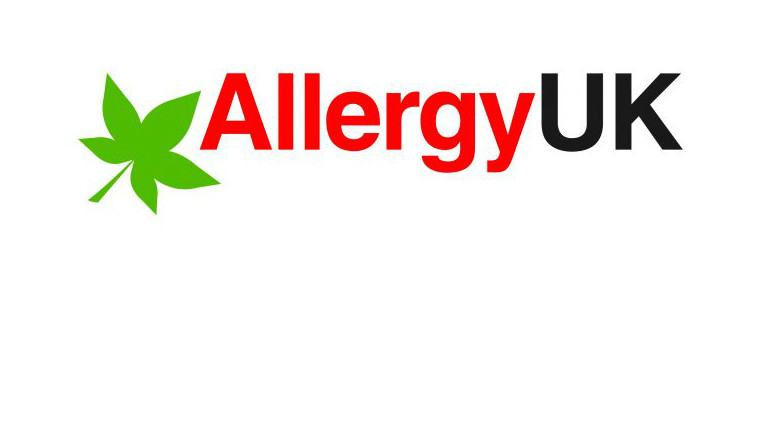By Holly Shaw, Nurse Advisor to Allergy UK
Learn more at www.allergyuk.org
Twitter: @Allergyuk1 Like AllergyUK on Facebook
Parents commonly present to their GP or Health Visitor with concerns over cow’s milk allergy. These concerns often come with a great deal of anxiety for the parent and should be addressed with sensitivity. Because parents often source information on allergy from varied sources there may be misconceptions that need to be addressed.
Cow’s milk protein allergy is commonly confused with lactose intolerance which is extremely rare. In Cow’s milk protein allergy it is the protein in the milk (casein and whey) that are the culprits that have the potential to cause a cow’s milk allergy. In lactose intolerance the problem is with a deficiency or absence of the lactase enzyme needed to break down lactose (sugar) in cow’s milk. Cow’s milk allergy is commonly seen when formula feeds containing cow’s milk are started, so essentially from birth, or in the exclusively breastfed infant when weaning starts and dairy is introduced into the weaning diet. In cases of very sensitive babies, the proteins can be transferred through the breast milk from dairy in the maternal diet and may cause allergic symptoms.
Food allergy can be complicated to diagnose, the NICE quality standard for food allergy (QS118) provides guidance for health professionals who may be involved in the diagnosis, assessment and management of food allergy in young children. Having clear guidance for managing patients presenting with symptoms suggestive of food allergy is important for ensuring patients have access to the correct diagnostic pathway.
Taking an allergy focused clinical history is the starting point on the pathway to a food allergy diagnosis. The allergy focused history should be tailored to the age of the individual baby or child and individual presenting symptoms. Questions that raise clinical suspicion for the increased risk of food allergy include a personal or family history of allergy and the presence of other allergic disease. Questions on diet are also very important.
Symptom recognition
Identifying the signs and symptoms suggestive of a suspected cow’s milk allergy can be challenging due to the variety of possible signs and symptoms which are commonly seen in other childhood conditions. However, the early recognition of signs and symptoms of a possible cow’s milk allergy will facilitate an accurate and timely diagnosis.
The onset of allergic symptoms can be divided into those seen within minutes of exposure to the suspected food allergen (IgE mediated). This type of allergic reaction is less common in prevalence with a higher proportion of infants presenting with delayed signs and symptoms (Non IgE mediated) which are observed several hours after exposure. Symptom timing offers important clues to whether the immune system was involved. Symptoms of IgE mediated allergy commonly affect the skin (erythema, hives and angioedema) and may also affect the respiratory system ( breathing difficulties, cough, wheeze). Delayed Non IgE mediated reactions commonly affect the gastrointestinal system with symptoms including vomiting, reflux, colic, diarrhoea, constipation, mucous containing stools and excessive amounts of wind. Infants who have symptoms suggestive of cow’s milk allergy may also be hard to settle and comfort, with back arching and appearing to be uncomfortable when laid flat.
Diagnosis of a cow’s milk allergy
The diagnostic test chosen should be guided by the information gained from the allergy focused history. The most appropriate test will depend on whether the allergy is thought to be IgE mediated or Non IgE mediated. The tests available for immediate (IgE) mediated allergy include skin prick testing and serum specific IgE blood tests which measure the presence of IgE in the skin and blood. There are no clinical tests for the diagnosis of Non IgE mediated allergies which are diagnosed using a trial diet of elimination and re-introduction of foods to see if the symptoms improve when the suspected food is removed from the diet. NICE guidance on the diagnosis and assessment of allergy in under 19s can be found at https://www.nice.org.uk/guidance/cg116 and MAP (Milk Allergy in Primary Care) guidelines are a useful tool to help GPs in the diagnosis and management of cow’s milk allergy.
Establishing the links
Atopy is the genetic predisposition to develop one or more allergic disease (hay fever, asthma, eczema, and food allergies) and often runs in families. It has long been known that genetics is an important determining factor in who develops allergy. The progression of allergic disease from birth to late childhood has been historically described as ‘the Allergic March.
Food allergy and eczema
The link between early onset eczema which develops in the first few months of life increases the risk of developing a food allergy and should be a red flag to health professionals alerting them to the increased possibility of developing a food allergy or other atopic condition. Exposure to certain foods, for example egg or cow’s milk, may also act as a trigger or make eczema worse. Cow’s milk allergy and eczema often co-exist and having an effective skin care treatment regime is important. Using an emollient is the mainstay of eczema management and can help reduce the itch associated with eczema. Emollients need to be applied frequently for maximum benefits. When eczema is active (observed as red, itchy and inflamed) it may need treatment with a topical steroid which will help reduce inflammation.
For those infants with eczema, having a defective skin barrier is a risk factor for infection and the transfer of food proteins via the transcutaneous route with the risk of sensitisation occurring to foods that have not been eaten.
Learn more at www.allergyuk.org
Twitter: @Allergyuk1 Like AllergyUK on Facebook




